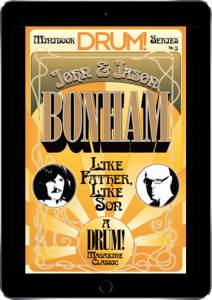BY BRAD SCHLUETER
Who is the prototypical hard rock drummer of all time? While we’re certain that our readers will offer scores of conflicting answers to that question, we think it’s none other than the late John Henry Bonham whose incredibly creative grooves and fills with Led Zeppelin—not coincidentally, the prototypical hard rock band of all time—earned him that notable distinction in the pages of drumming history books including his black dog time signature.
Though he was a very aggressive drummer, his playing often possessed a surprisingly laid-back feel. Employing technique that raised the bar for generations that followed, he grooved with tons of attitude and invention. It’s hard to say if he was more admired for his remarkable right foot or the massive sound he always coaxed from his drum set.
Regardless, when you put all the pieces together, you can’t miss the fact that he was one of a kind, who played Black Dog time signature. Sadly, Bonham died a premature “rock-androll” death, a loss that touched musicians around the world. It’s painful to think how much of his genius we’ve been denied. The following song excerpts will prove it.
How to Play ‘Black Dog’ and 5 Other John Bonham Beats
‘Achilles Last Stand,’ Presence
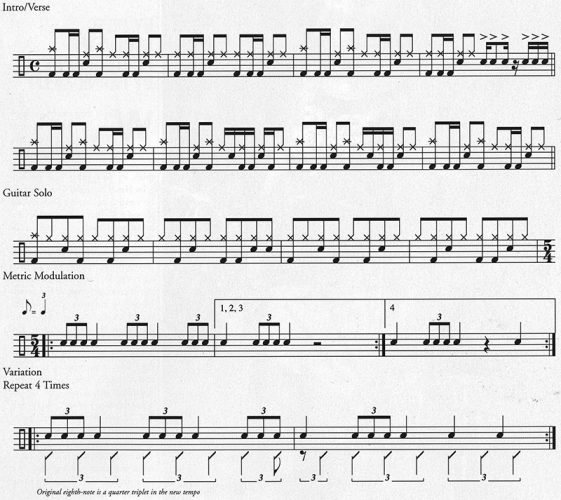
It’s easy to choose songs that showcase Bonham’s abilities. While you could literally pick any Zeppelin song, “Achilles Last Stand” is a particularly good example. Here he plays a driving groove that served as the primary inspiration for Michael Derosier’s groove on Heart’s “Barracuda.” It’s no wonder why—it feels great.
This song is about tenand-a-half minutes long, and proves Bonham had one heck of a right foot. The most interesting part happens during Jimmy Page’s guitar solo, where the band executes a metric modulation to a slower tempo, and changes to 5/4 meter. The eighth-note in the solo shifts to the value of a quarter-note triplet, and Bonham plays a series of triplets in 5/4 at the new tempo.
In the transcription of the pattern’s variation, I’ve indicated where the original tempo lies in relation to the new one, to help you understand how complex this modulation is. Unlike “Black Dog,” it doesn’t sound particularly odd, which is all the more remarkable considering how unusual it is.
‘The Crunge,’ Houses Of The Holy
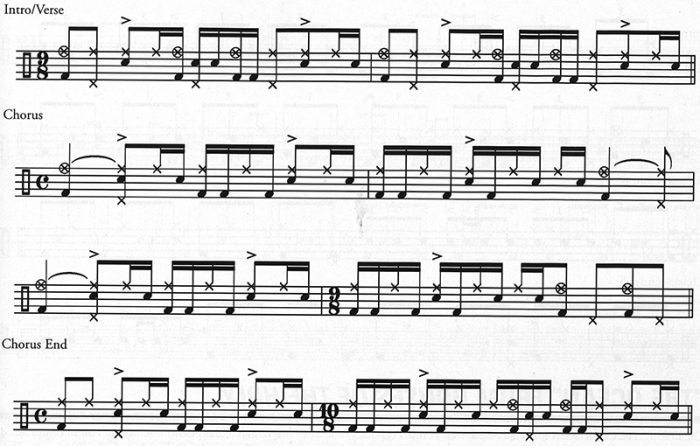
Odd meters were the bread and butter of Led Zeppelin. In “The Crunge” we see a famous Bonham groove, and some of the variations of it that he used to navigate this unusual song. This song has a 9/8 intro with some varying hi-hat openings to allow the groove to breathe.
At the chorus, the song changes to a much more comfortable 4/4 groove for three measures before reprising a measure of 9/8. When the chorus returns to the verse, there’s a measure of 10/8, just to keep Zeppelin tribute bands on their toes.
‘Rock And Roll,’ Led Zeppelin IV

This is one of the most recognizable drum intros in music. From the first sloshy hi-hat note to the last, this drum part is instantly recognizable. It has been featured in movies, commercials, and is the choice of thousands of bands for the last song of the night. So let’s give credit where credit is long overdue—to the great Charles Connor. Er, what?
That’s right, John Bonham didn’t create the intro to this song. He stole it, note for note, from Connor’s drum intro to Little Richard’s 1958 hit song “Keep A Knockin’.” Despite this being one of the most recognizable intros in rock, most drummers still don’t play it right. Here are two tricks to playing it correctly.
The first is to recognize that it begins on the & of beat 3. Second, Connor and Bonham played both hands simultaneously throughout it, making it more powerful, and that much more challenging.
‘Fool In The Rain,’ In Through The Out Door
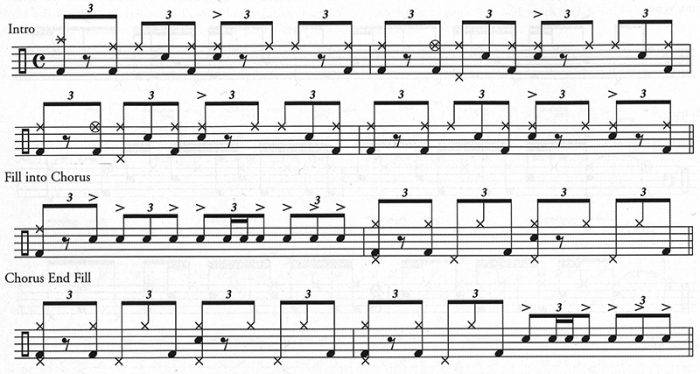
This tune is another example of Bonham’s great sense of groove. Here he plays a funky half-time shuffle for the intro and verses chat, once again, just feels great. He opens the hi-hat on the ah of beat 1 and uses ghost notes to perfectly set-up the accented snare hit on count 3. He plays a great little fill chat sets up the change into and out of the chorus.
During the chorus, he plays quarter-note triplets on his ride chat makes the groove feel faster than the verse. The lace studio drummer Jeff Porcaro was very influenced by Bonham, and used “Fool In The Rain” along with the Bo Diddley beat, as the basis for the groove to the Toto song “Rosanna.”
‘The Ocean,’ Houses Of The Holy
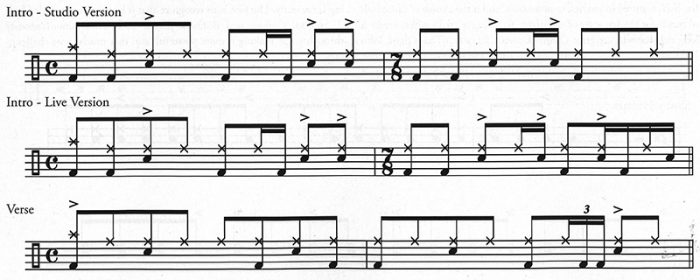
The title of “The Ocean” refers to the massive audiences that Zeppelin performed for on tour. They were incredibly popular, and broke most of The Beatles’ box office records, which is all the more remarkable since they were so musically adventurous. In the intro of this song, the time signature alternates between 4/4 and 7/8 and Bonham’s groove perfectly complements Jimmy Page’s great guitar riff.
I wrote out the studio version and a live version of this groove to show how Bonham embellished his parts on stage. The live version is definitely funkier and more powerful. Notice how the bass drum note on the ah of 3 is pretty faint, but still adds a lot of lift to the pattern. In the verse, we see one of Bonham signature single bass drum triplets.
‘Black Dog,’ Time Signature Led Zeppelin IV
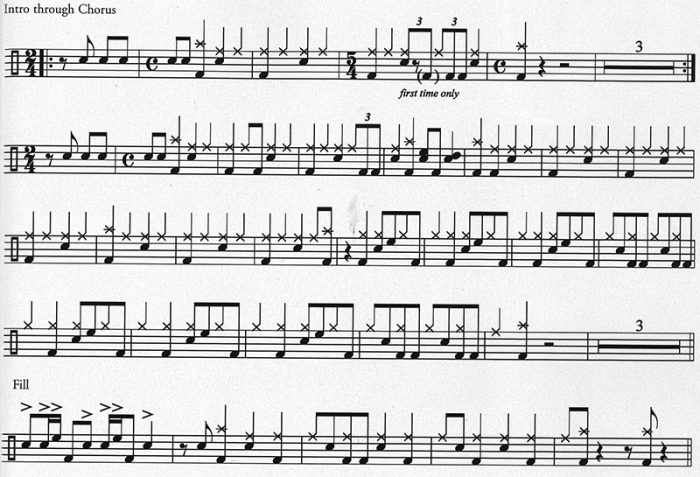
This song is avoided by cover bands like an unpaid bar tab at the end of the night. It has several things to fear: a really high vocal part, constantly changing time signatures, and a guitar and drum groove relationship that could baffle Trilok Gurtu. When this song is played well it sounds incredible, and rarely results in serious injury.
This article originally appeared in the February 2005 issue of Drum! magazine. Please note the above article includes affiliate links, meaning Drum! will earn a small commission (at no cost to you) when you click through and make a purchase. Thanks for your support!
Check out our FREE DOWNLOAD of “Bonham: Like Father Like Son.” In this father and son interview we asked John and Jason Bonham the same exact set of questions, only twenty years apart.

